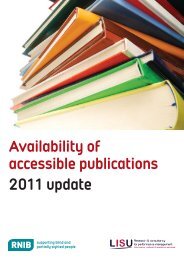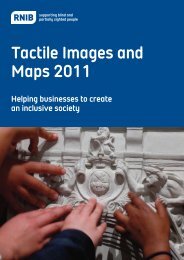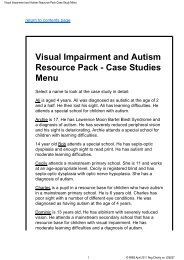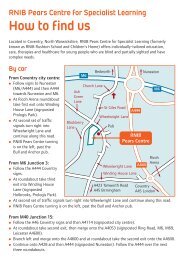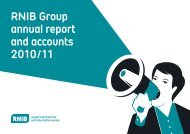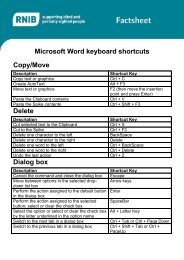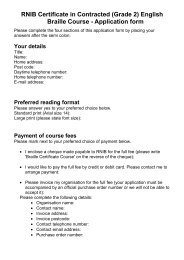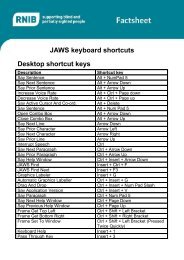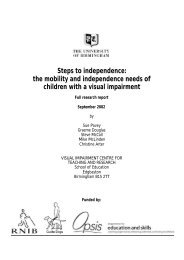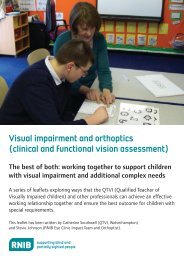Vocational rehabilitation: The business case for retaining ... - RNIB
Vocational rehabilitation: The business case for retaining ... - RNIB
Vocational rehabilitation: The business case for retaining ... - RNIB
You also want an ePaper? Increase the reach of your titles
YUMPU automatically turns print PDFs into web optimized ePapers that Google loves.
How to identify the costs and<br />
savings<br />
Costs of sickness absence<br />
<strong>The</strong> costs to employers will naturally vary from one individual to another but costs can<br />
be identified in the following areas:<br />
redundancy pay<br />
• total cost of medical pension up to retirement age (compared to what would have<br />
been paid had the employee left the <strong>business</strong>)<br />
reduction in employees contribution to overheads whilst they are absent<br />
loss of investment in training of the employee who has left the <strong>business</strong><br />
salary paid whilst staff are on sickness leave<br />
• costs of making adjustments, though these are likely to be a one-off cost and may<br />
be offset up to 80 per cent by Access to Work funding – (<strong>for</strong> in<strong>for</strong>mation on this<br />
Government programme see the appendix on sources of additional in<strong>for</strong>mation).<br />
• employer’s National Insurance contributions paid whilst the employee is on leave or<br />
absent <strong>for</strong> <strong>rehabilitation</strong> and retraining<br />
• loss of productivity whilst a new recruit or replacement worker attains the normal or<br />
appropriate level of productivity.<br />
13






